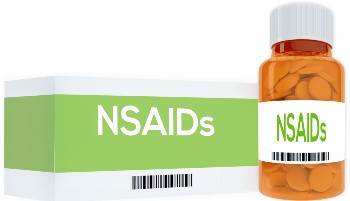1. What options do I have to treat my pain?
There are a variety of options for the treatment of chronic pain including medications taken by mouth and medications that are applied to the skin. Non-opioid, oral medications include nonsteroidal anti-inflammatory drugs (NSAIDs) such as ibuprofen, Celebrex, diclofenac, aspirin, and meloxicam; muscle relaxants such as tizanidine, cyclobenzaprine, and baclofen; and cyclooxygenase (COX) inhibitors such as acetaminophen or paracetamol.
The other medications that treat pain are classified as opioids. These medications work well for sudden (acute) pain but carry significant risks to the body such as breathing problems, constipation, and sleepiness. Topical medications can be applied to the skin, whether as an ointment or cream, or by a patch that is applied to the skin. Some of these patches work by being placed directly on top of the painful area where the active drug, such as lidocaine, is released deeper into the skin tissue. Some medications are available over-the-counter (OTC), while others may require a prescription.

Techniques involving injections are commonly offered to help alleviate pain. Known as interventional therapy, these injections often deposit local anesthetics or cortisone into the area surrounding nerves or joints. Depending on the type of pain, these injections can target painful muscles, a technique known as trigger point injections, or may involve other structures of the body such as the epidural space, which are called epidural steroid injections. Based on the area of pain, epidural injections can target the neck, if there is pain radiating down the arms, or low back, if the legs are involved. Sympathetic nerve blocks can help with nerve-related pain, including complex regional pain syndrome (CRPS).
Although some medications can cause difficult side effects, other options for pain control do not involve medication. They are known as non-pharmacologic treatments and include things like physical therapy, guided meditation, acupuncture, massage therapy, or aqua therapy. Transcutaneous electro-nerve stimulator (TENS) is a form of therapy where small pads are applied to painful areas on your skin to provide stimulation around the area and distract from the symptoms of pain.
2. What type of medications are used to treat chronic pain? What are some of the common side effects associated with these medications?

Several categories of medications are used for the treatment of chronic pain. In general, your primary physician, patient management specialist, or pharmacist may be to answer any questions about the dosage and side effects from these medications. The most commonly used medications can be divided into the following categories:
- NSAIDs and acetaminophen: Many different types of NSAIDs are available, and some of them (such as ibuprofen) are available OTC. NSAIDs can be very effective for acute muscular, bone, and arthritic pain. When taken for an extended
period or in large quantities, they may have negative effects on the kidneys, cause bleeding, and lead to gastric ulcers. Long-term use of COX II inhibitors may be associated with an increase in cardiovascular (heart) risks, including high blood
pressure. Acetaminophen is easily obtained OTC; however, care should be taken not to take more than 3,000 mg in 24 hours to avoid the risk of liver failure. Some opioid medications include acetaminophen; therefore, it is important to calculate
the maximum allowable daily dose of acetaminophen to avoid overdose.
- Antidepresssants: Some types of antidepressants may be very helpful in controlling nerve-related pain, including tricyclic antidepressants, serotonin-norepinephrine reuptake inhibitors, and other sodium channel blocking medications.
The pain-relieving properties of these medications enable them to relieve pain in lower doses than that needed to treat depression. These medications are not meant to be taken on an "as-needed" basis but must be taken every day whether or not
you have pain. Your physician may attempt to lessen some of the side effects, particularly sleepiness, by having you take these medications at night. There are some other side effects like dry mouth that can be treated with drinking water or fluids.
These medications may not be given to patients with certain types of glaucoma. In addition, these medications should never be taken in larger doses than prescribed.
- Anticonvulsants (anti-seizure) medications: These medications can be very helpful for some kinds of nerve type pain (such as burning, shooting pain). These medications are not meant to be taken on an "as-needed" basis, but, rather,
should be taken as prescribed so they build up in the body. They should be taken every day whether or not you feel pain. Some side effects include drowsiness, which often improves with lower doses and increasing them slowly over time. Other side
effects include weight gain and abdominal pain. If you have kidney stones or glaucoma, be sure to tell your doctor as some anticonvulsants are not recommended to be given under those conditions. Some newer anticonvulsants do not need liver monitoring
but require caution if given to patients with kidney disease.
- Muscle relaxants: These medications are most often used in the acute setting of muscle spasm, and they have minimal side effects. The most common side effects seen with these medications are drowsiness and dizziness.
- Opioids: When used appropriately, opioids may be effective in controlling certain types of chronic pain. They tend to be less effective or require higher doses in nerve-related pain. Long-acting opioids are rarely recommended for chronic pain conditions. One of the most frequent side effects of opioids is constipation, which can be treated by drinking lots of liquids but may need to be treated with OTC medications. Breathing problems are the most detrimental side effects of opioids, therefore this medication should not be combined with alcohol or benzodiazepine medications. Excessive drowsiness should be discussed with your physician. Nausea is another side effect that may be difficult to treat and may require changing to another opioid or prescription of antinausea medications.
3. If I am taking narcotic (opioid) medication for chronic pain, does that mean I am addicted?

Taking opioids in the way that they have been prescribed by your doctor for the treatment of chronic pain is associated with a low risk of becoming addicted to those opioids. Some people may have a higher chance of becoming addicted to opioids such as those who have a personal history or a family history of substance abuse and certain psychiatric illnesses.
The following definitions for addiction, tolerance, and physical dependence are provided by the American Pain Society.
- Addiction has a genetic basis and a psychological aspect. Addiction is associated with a craving for the abused substance (such as an opioid) and continued, compulsive use of that substance despite harm to the person using the substance. In addition to having a genetic predisposition, there may be an environmental influence affecting both the development and manifestation of the additive behavior.
- Tolerance occurs after prolonged exposure to a drug. The effects of that drug results in progressive decrease in its effectiveness.
- Physical dependence usually is seen in the form of drug withdrawal after the drug has been abruptly stopped or rapidly reduced. It can also be seen when an opioid antagonist (e.g., naloxone) is given to someone who is taking an opioid. It is a state of adaptation. Withdrawal symptoms last from approximately 6 to a peak of 24 to 72 hours after the drug has been withdrawn. Some of the symptoms include nausea, vomiting, sweating, abdominal pain, or diarrhea. These symptoms can occur after taking the opioid for as short a period as 2 weeks. It is not a sign of addiction.
If your doctor prescribes opioids, take them exactly as prescribed. If your pain continues despite taking the opioid, do not take more; instead, consult your doctor.
4. Which nerve block procedures are performed for the treatment of chronic pain? What are some of the side effects and risks associated with these nerve blocks?
Injections for diagnostic purposes or treatment of chronic pain are usually performed on an outpatient basis, although some are performed in the hospital. Most procedures are performed under fluoroscopic (X-ray) or ultrasound guidance. For any nerve block, you need to tell your doctor if you are allergic to contrast dye or if you think you may be pregnant. Below is a brief description of some of the more commonly performed nerve blocks by pain management specialists.

- Epidural steroid injection: Epidural steroid injections are performed in the back or neck. The injection allows the doctor to place anti-inflammatory steroid medication, with or without a local anesthetic, into the epidural space close to the area that is generating pain. These injections usually are done for pain involving the back and leg or the neck and arm/hand. These injections are always performed under X-ray for accuracy and safety. Common side effects include soreness of the back or neck at the point where the needle enters the skin. Some temporary numbness may occur, but tell your doctor if you experience numbness or weakness that lasts more than 8 hours. Epidural steroid injections may be placed in the lumbar (low back), thoracic (mid back), or cervical (neck) regions.
- Facet joint injection: The facet joints assist with movement and stabilization of the spine both in the neck and back. Injection into these joints can provide relief of neck or back pain; these injections are always performed under X-ray guidance. Patients may feel soreness in the neck or back when the needle is inserted. You will be positioned to lay on your stomach for this injection. A needle is placed in your neck or back and advanced to the level of the joint under x-ray visualization. This injection or nerve block is often used to learn more about what is causing the pain. A longer-lasting injection may be needed if you have significant pain relief from this injection. An example of a longer-lasting injection is radiofrequency ablation, which uses electric current to heat up an area of nerve tissue to stop it from sending pain signals.
 Lumbar sympathetic block: A lumbar sympathetic nerve block is performed for pain in the leg that is thought to be caused by complex regional pain syndrome (CRPS) type I. These injections are often performed under fluoroscopic
(X-ray) guidance or ultrasound guidance. Local anesthetic is placed near the lumbar sympathetic chain to relieve the pain. Your leg will likely become warm immediately following the injection: this is an expected effect and not a complication.
Back soreness is one of the more common side effects. If you feel any sharp pains down your leg or to your groin during the injection, you should let the physician know immediately. There may be some temporary numbness following the injection,
but contact your doctor if you experience persistent numbness or weakness lasting more than 8 hours. You will be positioned on your stomach for this injection. The injection is performed at the level of lumbar vertebrae two and three, in the lower
back. A needle is placed under X-ray guidance, just anterior to the vertebral body to the side of the affected area where the ganglion is located. When the needles are positioned, a small amount of dye is injected to make sure the needle is in
the right spot. After the doctor is satisfied that the contrast dye is in the right place, they will inject numbing medicine then remove the needle.
Lumbar sympathetic block: A lumbar sympathetic nerve block is performed for pain in the leg that is thought to be caused by complex regional pain syndrome (CRPS) type I. These injections are often performed under fluoroscopic
(X-ray) guidance or ultrasound guidance. Local anesthetic is placed near the lumbar sympathetic chain to relieve the pain. Your leg will likely become warm immediately following the injection: this is an expected effect and not a complication.
Back soreness is one of the more common side effects. If you feel any sharp pains down your leg or to your groin during the injection, you should let the physician know immediately. There may be some temporary numbness following the injection,
but contact your doctor if you experience persistent numbness or weakness lasting more than 8 hours. You will be positioned on your stomach for this injection. The injection is performed at the level of lumbar vertebrae two and three, in the lower
back. A needle is placed under X-ray guidance, just anterior to the vertebral body to the side of the affected area where the ganglion is located. When the needles are positioned, a small amount of dye is injected to make sure the needle is in
the right spot. After the doctor is satisfied that the contrast dye is in the right place, they will inject numbing medicine then remove the needle.- Celiac plexus block: A celiac plexus block is performed under fluoroscopic (X-ray) guidance to relieve pain in patients with chronic abdominal pain or cancer in areas of the abdomen causing significant pain. You will be positioned
on your stomach for this injection, and a needle is placed in the area of the back to target the sympathetic nerves of the abdomen. A small amount of dye is deposited through the needles and, if appropriately placed, numbing medicine is delivered
to the area of a group of nerves called the celiac plexus. For chronic pain, this injection is performed in a series of three. For cancer pain, a single diagnostic injection is used to see whether a more permanent injection may help with the pain.
If the diagnostic nerve block provides significant pain relief, the longer lasting injection may be done using either phenol or alcohol solution.
- Stellate ganglion block: A stellate ganglion block is an injection that is performed for the treatment and management of complex regional pain syndrome (CRPS) of the hand, arm, or shoulder. It also can be used to help improve blood flow to the hand or arm in certain conditions that result in poor circulation of the hand. Side effects may include soreness in the neck where the needle was placed. In some instances, the side effects may include droopiness of your eyelid on the side that is injected, along with a temporarily stuffy nose and sometimes temporary difficulty in swallowing or hoarseness of the voice. This injection is performed with fluoroscopic (X-ray) guidance or ultrasound imaging. You will be lying on your back for this injection. If this injection is performed using X-ray, the doctor will first inject a small amount of contrast dye to confirm the placement of the needle. This will be followed by injecting some numbing medicine.
5. Will I receive a bill from the pain management specialist?
Your pain management specialist is a physician specialist like your surgeon or internist. You probably will receive a bill for your pain management specialist's professional service as you would from other physicians. If you have any financial concerns, your pain management specialist or an office staff member will answer your questions.
Acknowledgment: Thank you to Tolga Suvar, MD, for reviewing and updating this material. Dr. Suvar is double board-certified in interventional pain and anesthesiology at Rush University in Chicago, and member of the ASRA Website and Social Media Committee. This material was last updated in April 2021.